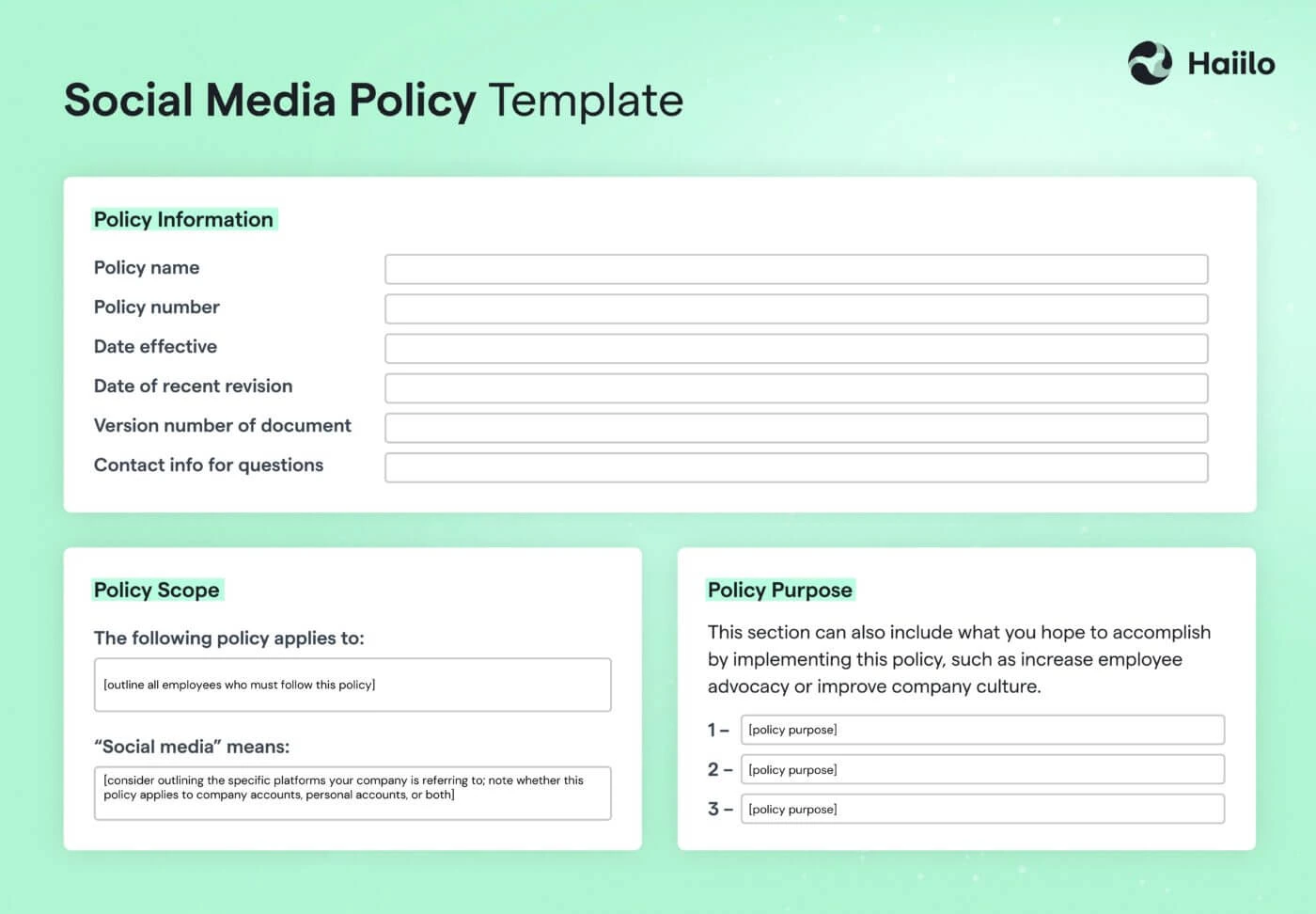
Brand advocacy can be one of the most powerful ways to build brand awareness, drive new leads, close new customers, attract and hire new job candidates.
Moreover, Weber Shandwick discovered that 21% of employees within organizations were estimated to be brand advocates and another 33% have the potential to be ones. However, some organizations are still not sure about how to leverage this huge potential.
In this blog post, we will go over the importance of brand advocacy and best practices for creating, launching and managing a successful brand advocacy initiative.

What is Brand Advocacy?
Brand advocacy is a term used to describe actions taken by people who love your brand and continuously support your organization by promoting products and services to new customers and prospects.
Having brand advocacy programs help your company become visible to larger audiences, build stronger brand awareness, and increase revenue while eliminating costs associated with other traditional marketing campaigns.
Therefore, having brand advocates within your organizations can bring significant value to your business.
Just consider this piece of information:
According to results from the Kredible Employee Advocacy Study, employee advocacy programs that involve at least 1,000 active participants can generate $1,900,000 in advertising value.
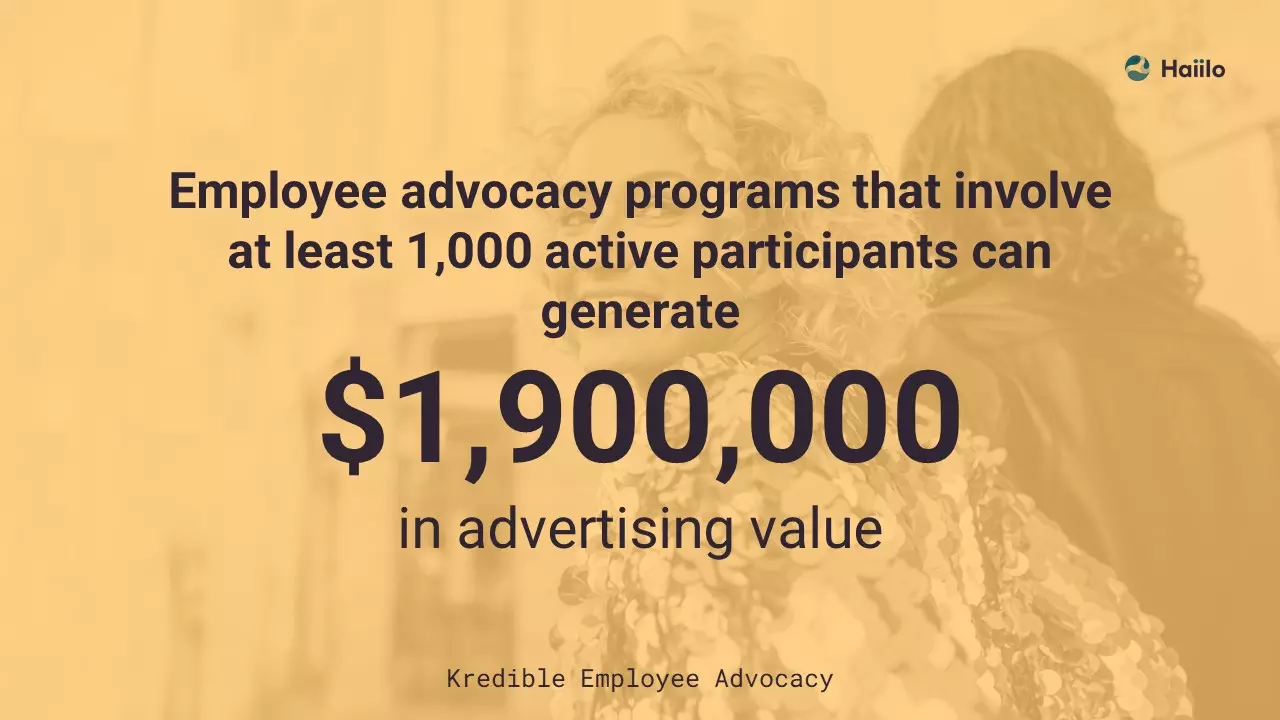
Who Can Be a Brand Advocate?
A brand advocate can be anyone who participates in brand-promotion actions and, therefore, supports your company’s growth.
The 4 most common groups of brand advocates include:
- Employees: Your employees have the most knowledge about your existing products and services and therefore, can be your best brand advocates. Moreover, large organizations can reach a much wider audience just by encouraging their employees to join the advocacy programs.
- Business partners: Strong partnerships and affiliate programs can also be a great source for widening the customer base and brand awareness.
- Influencers: Influencers are famous people with a lot of followers on different online platforms such as social media. Many organizations hire influencers to help them drive more visibility and sales.
- Customers: Having customers as brand advocates can be a beneficial and influential marketing tactic. As many prospects rely on existing customers’ reviews and word-of-mouth, customer advocacy is a powerful way to attract and close new clients.
Even though it would be great to have all these groups as brand advocates, this is often very hard to achieve. Influencers may be expensive, and customers may be hard to engage to participate in brand advocacy programs.
On the other side, employees are often considered as best brand advocates when it comes to both employer and corporate branding. Launching a simple employee advocacy program in your organization can go a long way in driving better business results.
Here, it is important to understand the difference among different generations in the workplace. A survey by The Marketing Advisory Network showed a clear difference between the generations when it came to sharing information about their workplace. 81% of Millennials share information about their job, compared to 72% of Generation Z and a mere 47% of Baby Boomers.
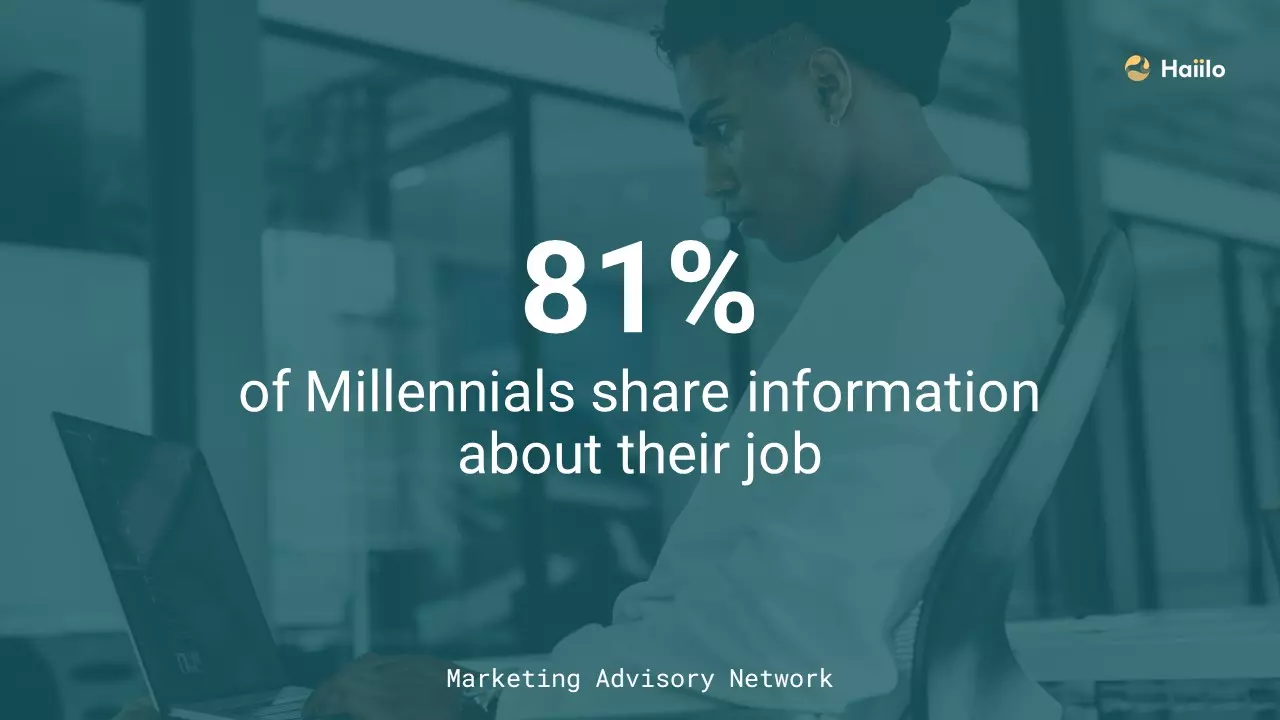
Brand Advocacy Challenges
Throughout this blog, you will learn more about the benefits of brand advocacy. However, even though organizations are well aware of these benefits, they still struggle to build, implement, launch and manage successful advocacy programs.
The image below represents the most common brand advocacy challenges such as difficulties to motivate employees to participate, inability to measure the success of brand advocacy programs, lack of employees’ and leadership’s buy-in, and improper technology that facilitate brand advocacy.
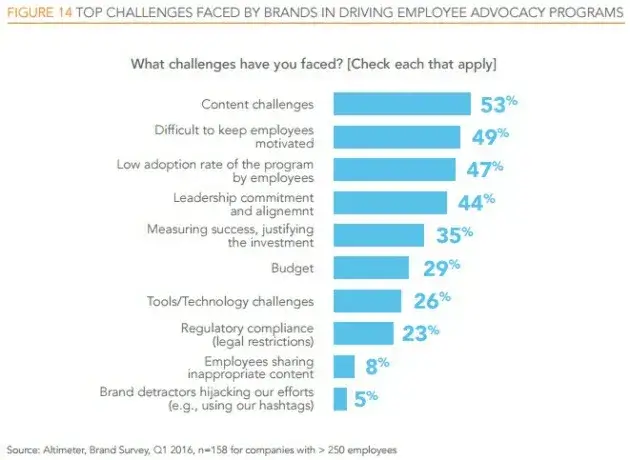
How to Build a Successful Brand Advocacy Program
LinkedIn found the employees of a company tend to have 10 times more followers than the company itself. To add, while only about 2% of employees reshare their company’s social posts, they are responsible for 20% of the overall engagement.
Therefore, many organizations and marketers are now looking for ways to encourage their employees and other stakeholders such as partners, contractors, and consultants to participate in their brand advocacy programs. However, organizations need to have well-set brand advocacy strategies in place in order to get the most of their stakeholders’ engagement.
Let’s take a look at some of the best practices for creating, launching, and managing brand advocacy programs.
1. Communicate the benefits to build trust and create a sense of purpose
One of the most important prerequisites for successful brand advocacy programs is getting employees’ and other stakeholders’ buy-in through proper internal communications.
Marketers, who are often responsible for managing advocacy initiatives, are responsible for explaining the benefits of brand advocacy in strengthening employees’ personal brands and helping their companies as a whole.
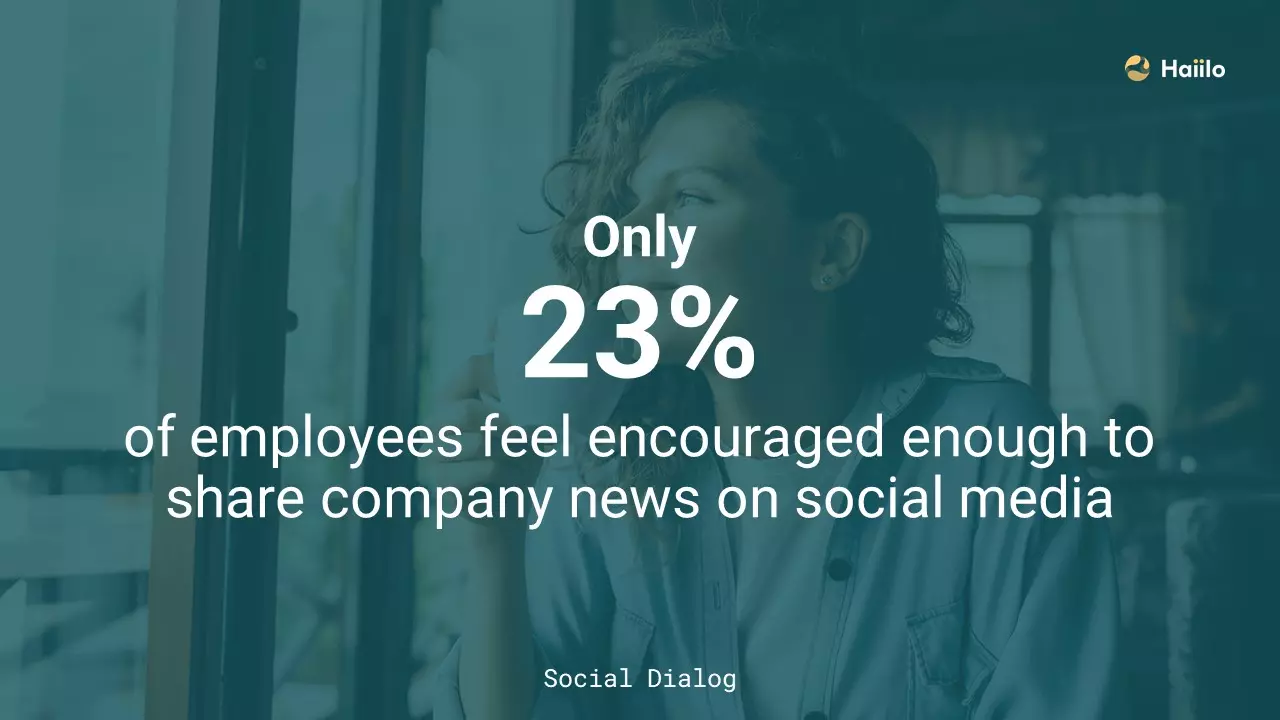
Want to learn more? Check out our social media policy template!
